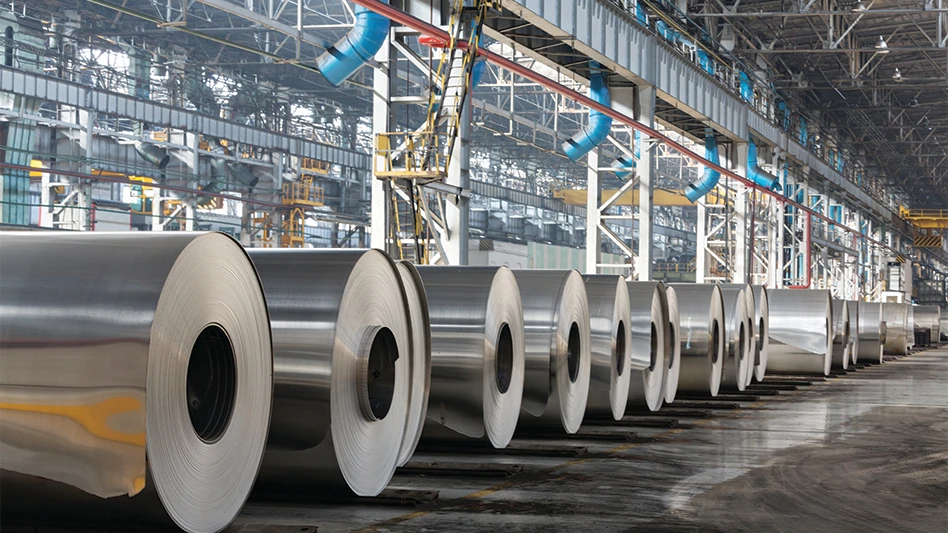
Pavel Losevsky | stock.adobe.com
The Aluminum Association, Arlington, Virginia, has released preliminary estimates as part of its monthly "Aluminum Situation" statistical report showing demand for the aluminum industry in the United States and Canada increased 4.3 percent year over year through the first quarter of 2024.
This follows an estimated drop of 3.9 percent last year after strong results in 2022.
“Domestic aluminum demand is rebounding so far this year amidst continued interest from our customers and end consumers in more sustainable, recyclable material options,” Aluminum Association President and CEO Charles Johnson says. “We continue to believe that the North American region—and the United States in particular—is one of the best places in the world to make and use aluminum. The ongoing investment and demand we are seeing appear to agree.”
RELATED: Aluminum scrap availability likely to remain tight
Among key takeaways from the report:
- Aluminum demand in the U.S. and Canada (shipments by domestic producers plus imports) totaled an estimated 6.9 billion pounds through March, compared with 6.7 billion pounds in the first quarter of 2023.
- Primary aluminum ingot shipments increased 16 percent year over year compared to the first quarter of last year, while sheet and plate shipments grew 6.1 percent during the same time period.
- At the same time, foil shipments dropped 19.2 percent and extruded product shipments dropped 5.4 percent in the first quarter compared to last year.
- Total semifabricated, or “mill," product demand increased 0.5 percent year over year.
- Exports of aluminum ingot and mill products from the U.S. and Canada (excluding cross-border trade) totaled 769 million pounds to date, up 36.6 percent over the same period of 2023.
- On average, orders recorded by domestic producers year-to-date (through April) increased 4.8 percent over year-to-date 2023, according to the association’s Index of Net New Orders of Aluminum Mill Products (baseline index of 100).
- Total imports of unwrought aluminum and semi-fabricated aluminum products into the U.S. and Canada have fallen 13.5 percent year-to-date (through April) in 2024.
Also, over the last decade, Aluminum Association member companies have announced more than $10 billion in investments for domestic manufacturing operations, including nearly $200 million in U.S. manufacturing in 2024 alone. The association says this “historic” investment largely is thanks to demand for sustainable packaging, safe and efficient vehicles, greener buildings and vital infrastructure.
Additionally, the Aluminum Association recently completed a report, "Pathways to Decarbonization: A North American Aluminum Roadmap," that lays out theoretical pathways to achieve industrywide carbon emission reductions consistent with the International Energy Agency’s (IEA) Net Zero by 2050 goals.
The association says the report concluded that North America enjoys a significant carbon emissions advantage over much of the rest of the global aluminum industry. Moving forward, access to abundant clean energy and investment in new technologies will be central to hitting ambitious emissions targets by midcentury.
Latest from Recycling Today
- BMW Group, Encory launch 'direct recycling’ of batteries
- Loom Carbon, RTI International partner to scale textile recycling technology
- Goodwill Industries of West Michigan, American Glass Mosaics partner to divert glass from landfill
- CARI forms federal advocacy partnership
- Monthly packaging papers shipments down in November
- STEEL Act aims to enhance trade enforcement to prevent dumping of steel in the US
- San Francisco schools introduce compostable lunch trays
- Aduro graduates from Shell GameChanger program





